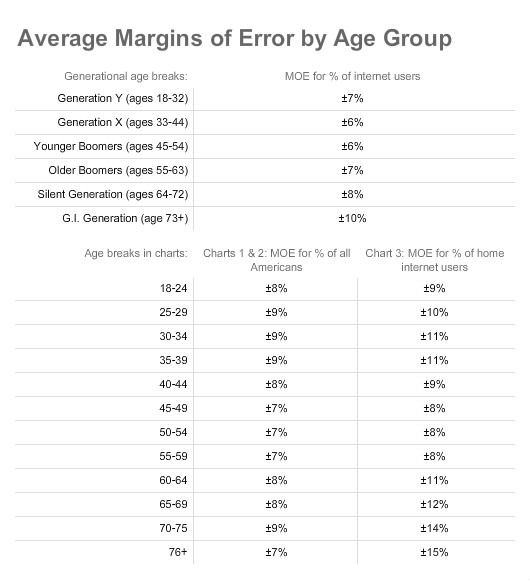About the Pew Research Center’s Internet & American Life Project
The Pew Internet Project is an initiative of the Pew Research Center, a nonprofit “fact tank” that provides information on the issues, attitudes and trends shaping America and the world. The Pew Internet Project explores the impact of the internet on children, families, communities, the work place, schools, health care and civic/political life. The Project is nonpartisan and takes no position on policy issues. Support for the project is provided by The Pew Charitable Trusts.
Methodology
The results of this survey are based on data from a series of telephone interviews conducted by Princeton Survey Research Associates International primarily between August 2006 and August 2008. For all results based on adult internet users, the margin of error is ±3%. For results based on teen internet users (ages 12-17), conducted in October-November, 2004, and October-November, 2006, the margin of error is ±4%. For results based on teen internet users, conducted in November 2007-February, 2008, the margin of error is ±3%. The margin of error for each generational subgroup shown in the table on page four and discussed throughout the report, however, can be considerably higher than that for the sample of all internet users. Below is a list of the average margins of error for each age group listed in the table:
For more information about the latest trends in internet use, please see https://www.pewresearch.org/internet/trends.asp.
For more information about the sample of 12-17-year-olds, please see the “Teens and Social Media” report (available at https://www.pewresearch.org/internet/PPF/r/230/report_display.asp).
In addition to sample error, question wording and practical difficulties in conducting telephone surveys may introduce some error or bias into the findings of opinion polls.
The sample for this survey is a random digit sample of telephone numbers selected from telephone exchanges in the continental United States. The random digit aspect of the sample is used to avoid “listing” bias and provides representation of both listed and unlisted numbers (including not-yet-listed numbers). The design of the sample achieves this representation by random generation of the last two digits of telephone numbers selected on the basis of their area code, telephone exchange, and bank number.
Non-response in telephone interviews produces some known biases in survey-derived estimates because participation tends to vary for different subgroups of the population, and these subgroups are likely to vary also on questions of substantive interest. In order to compensate for these known biases, the sample data are weighted in analysis. The demographic weighting parameters are derived from a special analysis of the most recently available Census Bureau’s Annual Social and Economic Supplement (March 2007). This analysis produces population parameters for the demographic characteristics of adults age 18 or older, living in households that contain a telephone. These parameters are then compared with the sample characteristics to construct sample weights. The weights are derived using an iterative technique that simultaneously balances the distribution of all weighting parameters.





